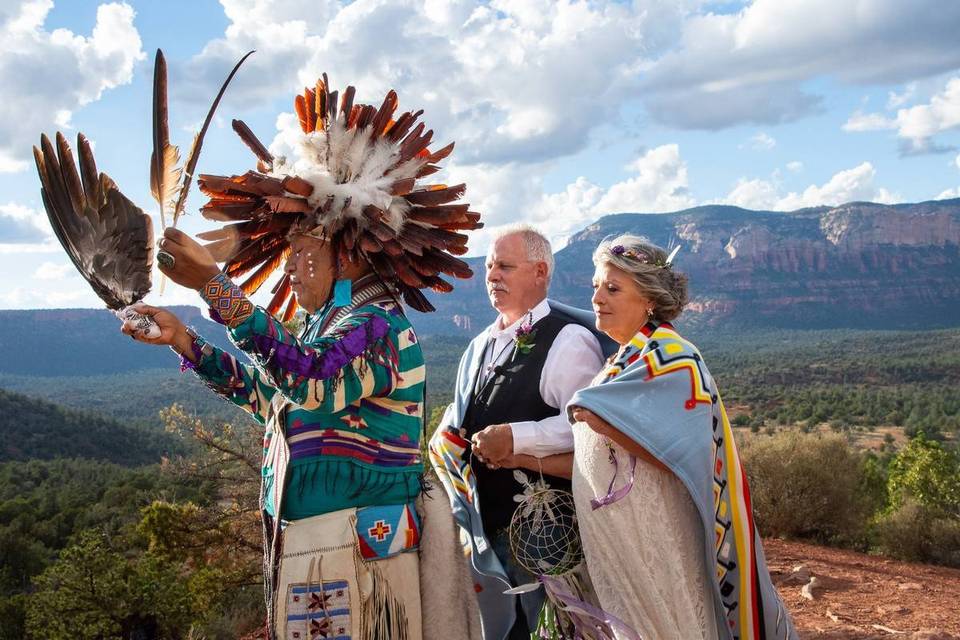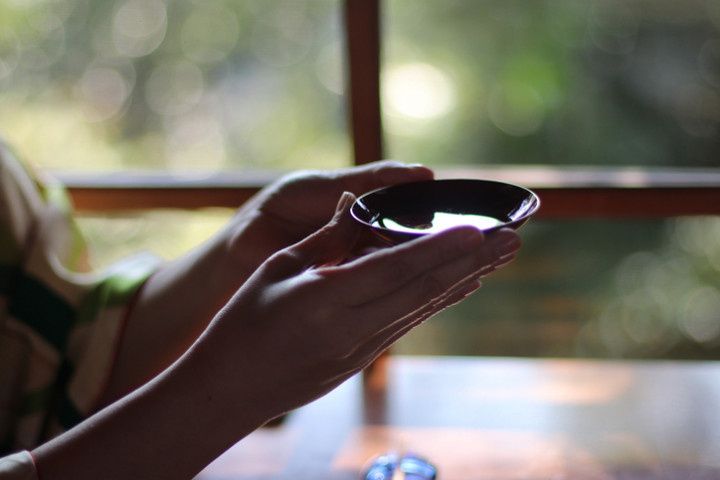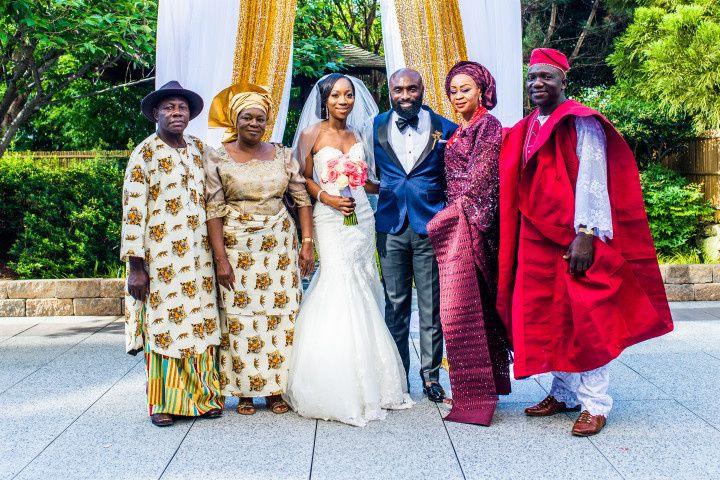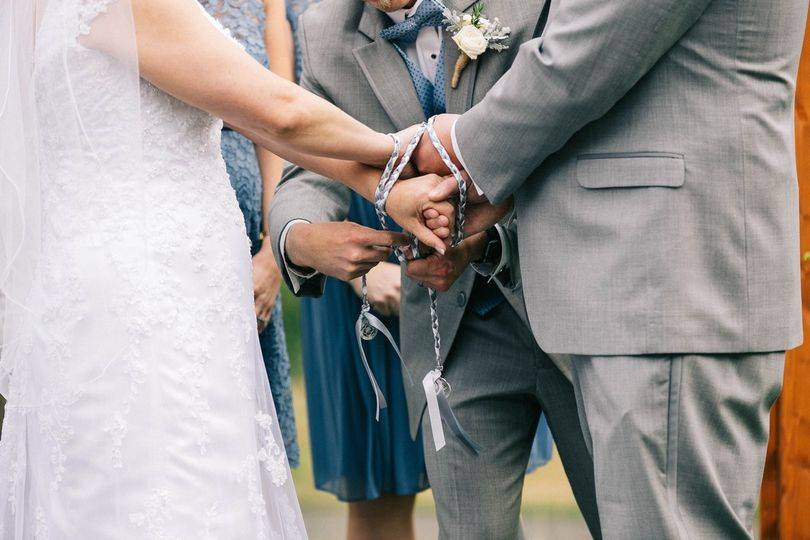Korean Wedding Customs Guests Should Definitely Know
If you’ve been invited to your first Korean wedding, read up on the unique customs and traditions you’re likely to experience.
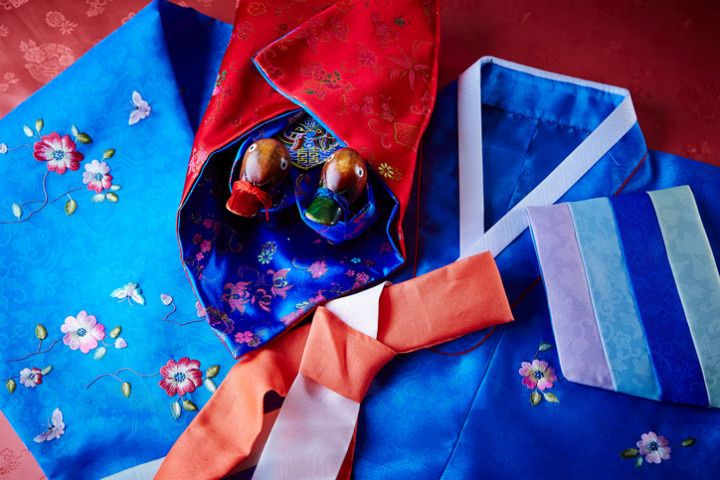

A Korean wedding in the United States is typically a blend of customs and rituals from both countries. If you’ve been invited to the wedding of a Korean American friend or relative there’s a good chance at least some of the old country culture will be incorporated into the ceremony, so it’s nice to know what to expect.
Here’s what guests should definitely know before attending a Korean wedding.
Korean weddings celebrate two families becoming one.
Western weddings focus a lot on the couple, but traditional Korean weddings are really the joining of two families. This belief drives a lot of the customs, including the tradition that the parents of the couple invite everyone they know to the wedding. Modern Korean American couples might not subscribe to this idea so literally, but guests lists with hundreds of acquaintances of the parents aren’t uncommon.
Additionally, wedding ceremonies are called Taerye, or “the great ritual,” and the entire family is part of this ceremony. So, if you have a not-so-close relative who is Korean American or marrying a Korean American, your presence at the wedding is not considered optional in the way it might be at a Western ceremony.
Grooms present a wild goose to their future in-laws.
Before the wedding there’s the Jeonanrye, which is an ancient Korean ritual that involves the groom presenting his future mother-in law with a wild goose to show that his commitment to her daughter is lifelong. (Geese mate for life.) Nowadays, grooms don’t have to go searching for wild fowl and can offer a pair of wooden geese to symbolize the custom.
Korean couples traditionally wear a special robe to their weddings.
In South Korea, brides, grooms and their family will wear ceremonial robes called hanbok to the kunbere, the traditional Korean ceremony. The bride often wears a red robe and the groom wears blue to symbolize the Confucian idea of yin (female, red) and yang (male, blue) energy. The mother of the bride wears pink or purple and the mother of the groom wears blue to signify their relationships to the couple.
Modern Korean American couples often choose Western-style wedding dresses and suits, saving the hanbok for a family-only post-wedding ceremony, or forgoing altogether. Parents and grandparents of the couple are more likely to wear the hanbok regardless of what the couple chooses to wear.
Korean wedding ceremony rituals are pretty short.
Korean wedding ceremonies are largely inspired by Confucianism, a Chinese philosophy adopted by many in South Korea. Modern couples often observe other religions, particularly Christianity, so some of the traditional customs might be altered or substituted to suit other belief systems.
A standard Korean wedding ceremony will include an officiant and a Master of Ceremonies. These two will lead the couple through succinct wedding vows before the bride and groom bow to each other. The newly married couple will then share wine from a gourd grown by the bride’s mother. The wine ceremony symbolizes a divinely orchestrated love match.
Be prepared with a cash wedding gift.
It’s traditional for guests to bring crisp cash in a white envelope to Korean weddings. The amount depends on your relationship to the couple, with closer friends and relatives expected to give more. (Also, if you’re giving cash as a couple, etiquette rules dictate you part with a bit more cash.) Your Korean American host may or may not be expecting you to honor this tradition, though. Take your cue from the invitation. If a registry is listed, and you feel more comfortable purchasing a gift from that, then there’s no need to bring cash, as well.
Dates and chestnuts predict the couple’s future children.
After the wedding, the couple visits the groom’s family home for the pyebaek. At this gathering, the bride will give her new in-laws dates and chestnuts, which symbolize the daughters and sons she hopes to have in the future. Her in-laws will return the gesture and give her sake. At the end of the meeting, the bride will use the skirt of her hanbok to try and catch the dates and chestnuts, which her in-laws will playfully toss at her. However many she manages to catch is said to be the number of kids she’ll have.

